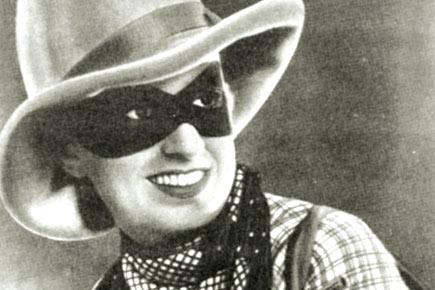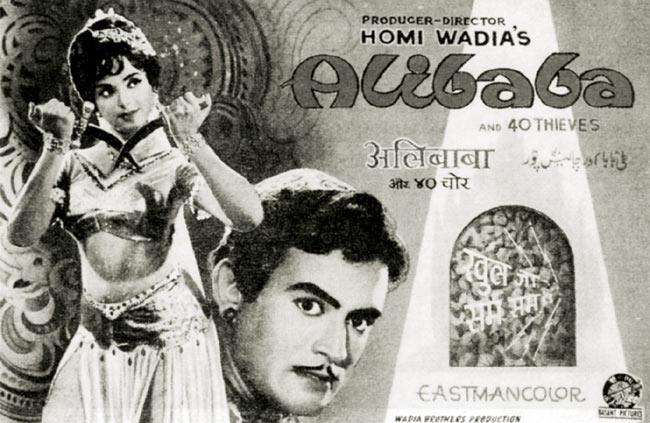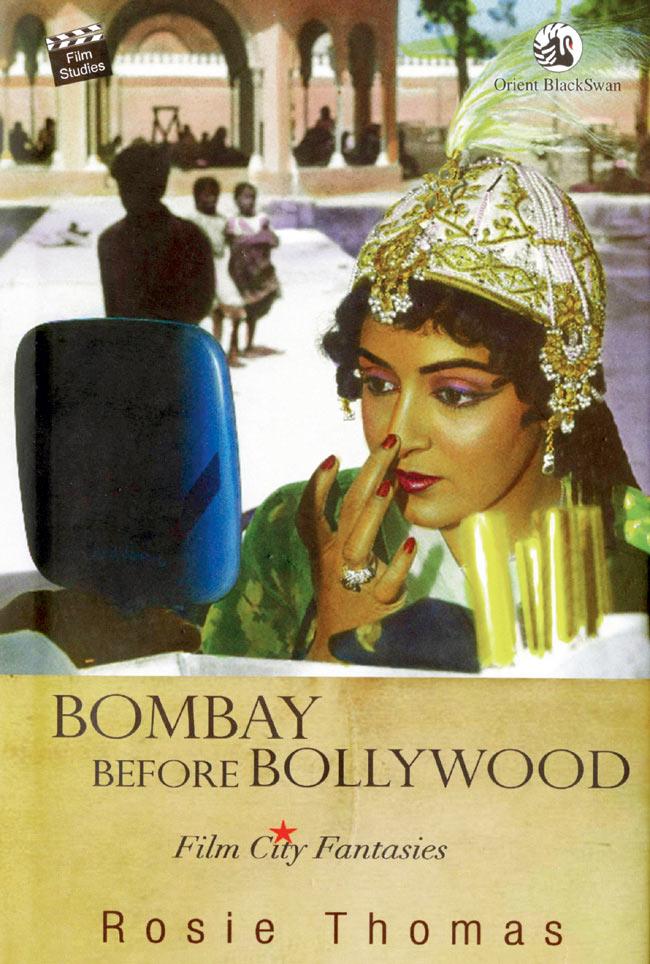Professor Rosie Thomas' book, Before Bollywood: Film City Fantasies, pays homage to Indian B-films made between 1903 and 1993. Kareena N Gianani explores Thomas' fascination with an arm of Hindi cinema often rubbished by mainstream filmmakers

As she speaks, Rosie Thomas, Professor of Film, University of Westminster, excitedly shifts about quite a bit on the couch, gesticulating, her eyebrows almost ready to take off playfully. But it shouldn’t come as a surprise — after all, she is speaking about a 30-year-long fascination in her academic career.

Professor Rosie Thomas. Pic/Sayed Sameer Abedi
ADVERTISEMENT
Thomas’ recently-released book, Bombay Before Bollywood: Film City Fantasies, chronicles the under-discussed yet significant culture of B-movies in India between 1930-1993. It also delves into underlying themes of Indian cinema and how actors, production values and budgets might have changed, but themes have lasted over decades.
 Thomas visited a day-care centre for seniors to speak to them about their memories of watching Fearless Nadia onscreen. A man was so thrilled that he came out of his room wearing her signature mask and cape, carved out of a newspaper
Thomas visited a day-care centre for seniors to speak to them about their memories of watching Fearless Nadia onscreen. A man was so thrilled that he came out of his room wearing her signature mask and cape, carved out of a newspaper
Thomas mainly worked on her book between 2005 and 2012, but she says the Hindi cinema bug bit her three decades ago. Back then, she was studying Anthropology at The London School Of Economics, UK. When it came to choosing a topic for her PhD, her professors pronounced her crazy (informally, of course, but vehemently). “I announced that I am going to India for a PhD on Hindi cinema. Unlike now, Hindi cinema was quite obscure in the UK.”

Not many know that Raja Harishchandra (1913) may not have been the first Indian film. Hiralal Sen released a B-film, Ali Baba, in 1903 in Calcutta. The prints have been burnt down, but it means that the first celluloid hero of Indian cinema was not a prince but a poor woodcutter
Thomas spent 18 months in Pune and Mumbai (then Bombay) and hung out with the film fraternity to understand the ethos of the film industry. “I was lucky to have been introduced to actor Smita Patil and Mohan’s Segal’s daughter, Uma.” She smiles and recalls those days spent diving into old dialogue books and cassettes, and watching two-three films every week.

Thomas’ next book looks at the life and works of B-filmmaker, Homi Wadia, who made Khilari . Thomas does not award B-films a certificate of brilliance. But she does think they were significant because of their bold experiments with special effects, and secular themes
“Over time, I realised I was imbibing the culture — for instance, to understand what how did secular motifs emerge in Manmohan Desai’s films, I sat during scripting. He drew the Hindu, Muslim and Catholic characters on a blackboard with different coloured chalks and spent hours etching them out,” she remembers. The professor says she is aware that she came across as an “eccentric, white woman” fascinated by the unknown in a land far away. “But that suited the anthropologist in me just fine.”
Thomas says she also paid great attention to how Hindi films were financed, black money et al, and began working with trade pundits. She sat for the Friday screenings and over time, could predict the film’s fate just as well as the authors of the trade guide.
In 2005, Thomas decided to take her work on Hindi cinema ahead. “I wanted to explore the aesthetics of the B-films in Hindi cinema. There’s a lot of snobbery about not watching them, but everyone knew what they were all about.” Thomas, however, had more interesting reasons behind her decision. “Not many people know that Raja Harishchandra (1913) may not have been the first Hindi film at all. Hiralal Sen had released a two-hour film, Ali Baba in 1903 in Calcutta. The film has been burnt down now. So, the first celluloid hero of Hindi cinema was not a prince but a poor woodcutter, and few even know it,” she says.
At a time when the world was enamoured with Bollywood, Thomas wanted to go back in time and unearth a different tale. “My book tells a multi-stranded story in the history of Indian cinema,” says Thomas. “No one knows of the landmarks these B-films boast of — in 1925, for instance, Homi Wadia’s Gul-e-Bakavali was the first hit silent film of the country, a year before Thief Of Baghdad.”
Thomas says she is not awarding B-films any certificate of artistic brilliance. “However, I do think that they deserve their share of recognition because they experimented boldly with special effects, while the ‘elite’ filmmakers were not. Also, mainstream filmmakers often pride themselves for giving the audience a secular fare, which isn’t true — the Islamic culture was alive in B-films in the late 1930s even when the mainstream films were not so inclusive. Look at Arabian Nights, Fearless Nadia — that’s secular in the true sense.”
Thomas concentrated on the work of Homi Wadia, Nanabhai Bhatt (Mahesh Bhatt’s father) and Kekubhai Desai (Manmohan Desai’s father) — the three biggies of the B-film industry in Bombay. “I think their work is not widely discussed because, as always, history is written by the winners,” feels Thomas. Their part of the history, she argues, is even more significant because we just celebrated 100 years of Indian cinema.
Is there a contemporary parallel to mainstream Hindi cinema today, like the B-films once were? She bursts into laughter and says, “Why do you think I asked Mahesh Bhatt to launch my book — he is the perfect example of roping in the likes of Emraan Hashmi, making masala films on not-very-high budgets and getting it right with the masses,” she says.
In her book, Thomas also speaks of the logic of mainstream Hindi cinema. “I have tried to show how Agneepath is related to Khalnayak, which is related to Deewar and that, to Mother India. The basic Indian ethos remains unchanged in the cinema.”
Thomas is not done with B films yet — her next book is solely dedicated to the lives of Homi Wadia and Fearless Nadia. “They had no pretensions on being ‘artistes’ but their cinematic journeys were fascinating, and I’d like to chart that,” says Thomas.

Bombay Before Bollywood: Film City Fantasies
Rosie Thomas
Rs 875
Published by Orient Blackswan
 Subscribe today by clicking the link and stay updated with the latest news!" Click here!
Subscribe today by clicking the link and stay updated with the latest news!" Click here!







